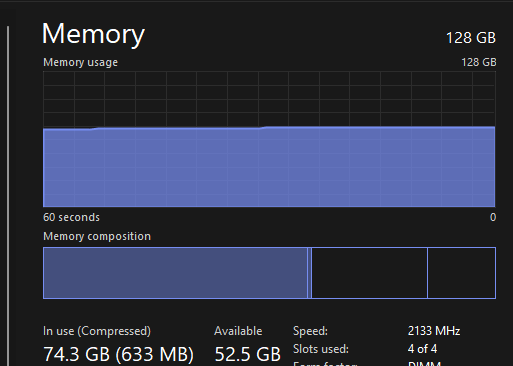With all the Fabric configuration done we can test our setup.
I’m creating two overlay segments in NSX connected to a Tier-1 gateway, and after that we’ll create a Tier-0 gateway and connect the T1 gateway to it to get North/South connectivity to the overlay resources
Two VMs will be deployed, one VM in each of the two overlay segments
Create a Tier-1 Gateway
The Tier-1 Gateway will initially not be connected to a Tier-0 Gateway (I haven’t configured a T0 gw yet) or an Edge Cluster.

Tier-1 Gateway
Create Logical segments
We need two logical segments, both using the Overlay Transport Zone. I’m defining different subnets on them, 10.0.1.0/24 and 10.0.2.0/24.

Segments
Add VMs to Logical segments
We have two Photon VMs which should be added to the logical segments.
Two Photon VMs
Test connectivity


Now let’s verify that the two VMs can ping each other

Don’t forget to enable the echo rule on the Windows Firewall….
Connectivity test
This shows that the overlay is working, and note again that the Edge VMs are not in use here.
External connectivity
Traffic is flowing between VMs running on Logical segments inside the NSX-T environment, but what if we want to reach something outside, or reach a VM inside a NSX-T overlay?
Then we need to bring a Tier-0 Gateway in to the mix.
The T-0 gateway can be configured with Uplinks that are connected to the physical network. This is done through a segment which can reach the physical network, normally through a VLAN.
To configure the uplink interfaces we need to have Edge VMs so finally we get to bring those into play as well.
Create segment for uplinks
First I’ll create a segment mapped to VLAN 99 in my lab. Note that I select the VLAN transport zone, and I do not connect the segment to a gateway

Create Uplink VLAN segment
Create Tier-0 gateway
Now we’ll create a Tier-0 gateway, note that I now also select my Edge cluster.

Create T0 gateway
Static route
To be able to forward traffic out of the NSX-T environment the T0 gateway needs to know where to send queries for IPs it doesn’t control. Normally you would want to configure a routing protocol like BGP or OSPF so that the T0 gateway could exchange routes with the physical router(s) in your network.
I’ve not set up BGP or any other routing protocol on my physical router, so I’ve just configured a default static route that forwards to my physical router. The next hop is set to the gateway address for the Uplink VLAN 99, 192.168.99.1

Static route
Link T1 gateway to T0 gateway
We’ve done a lot of configuring now, but still we’ve not got connectivity in or out for our VMs. The final step is to connect the Tier-1 gateway to the Tier-0 gateway, and we’ll also activate Route Advertisement of Connected Segments and Service Ports

Tier-1 Gateway
Test connectivity

Verify North/South connectivity
Yes!
Test Distributed Firewall
Let’s also do a quick test of the Distributed Firewall feature in NSX-T.
First we’ll create a rule blocking ICMP (ping) from any to my test vm and publish the rule


ICMP firewall rule
Now let’s test pinging from from my pc to nested Windows 2016 server. With the rule not enabled en enabled.

Ping blocked
Summary
Hopefully this post can help someone, if not it has at least helped me.
Now we have working environment so we can go testing some things.
Also scripting/automation against a nsx environment I will look in to!
Like this:
Like Loading...










 Figure 1: Holodeck Nested Diagram
Figure 1: Holodeck Nested Diagram

















You must be logged in to post a comment.